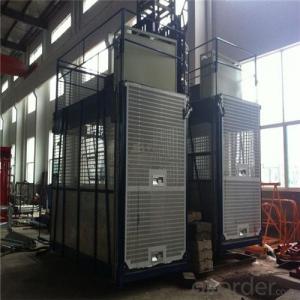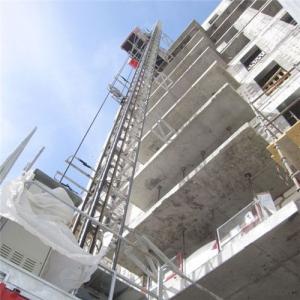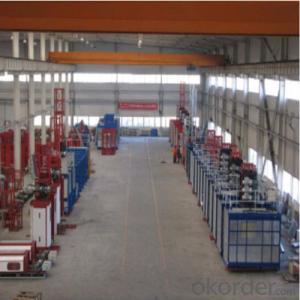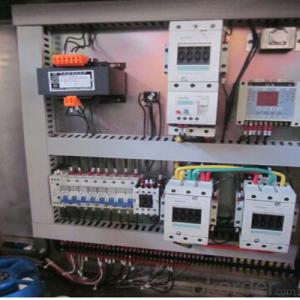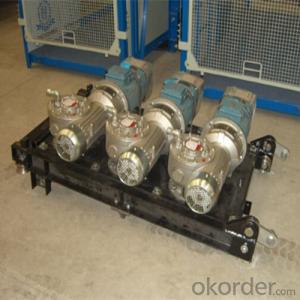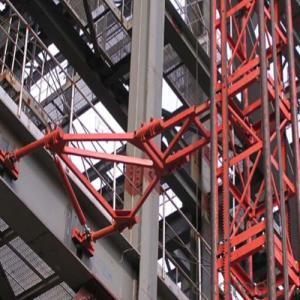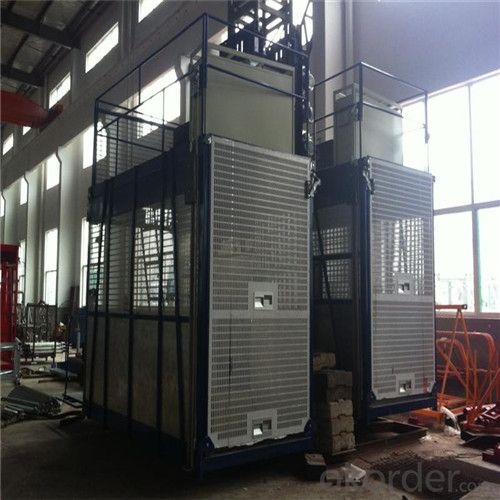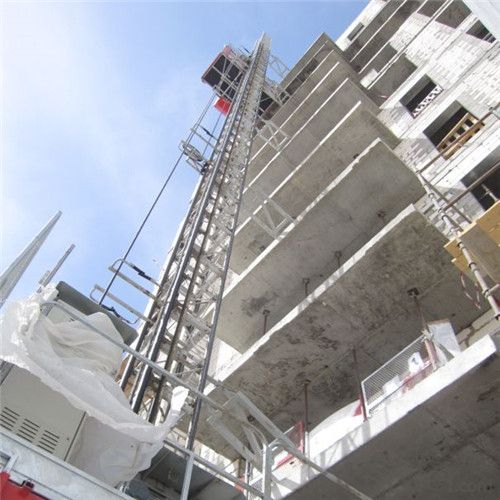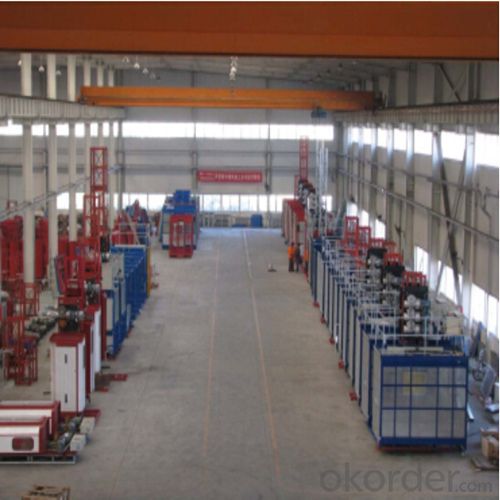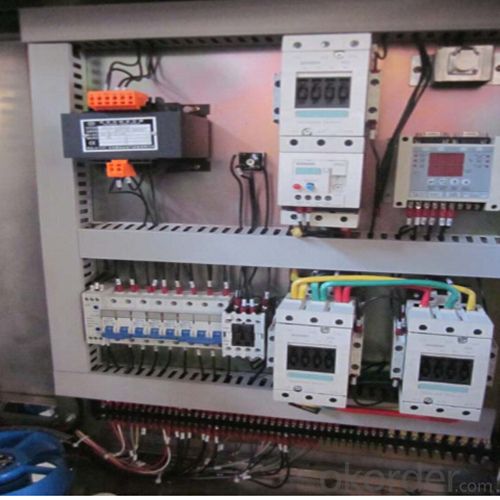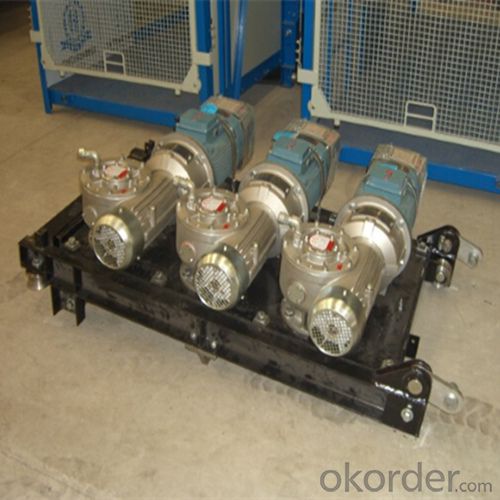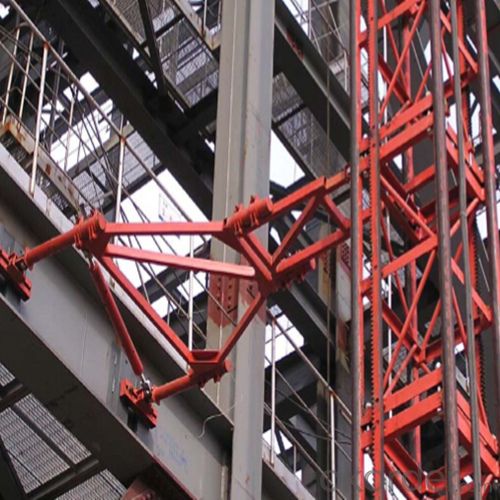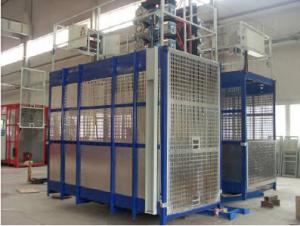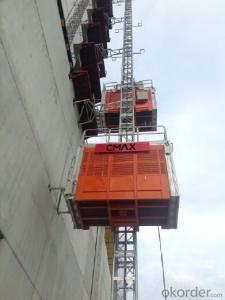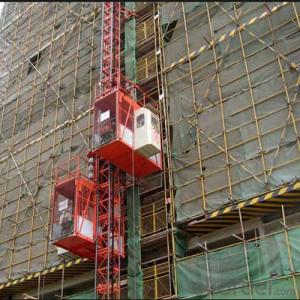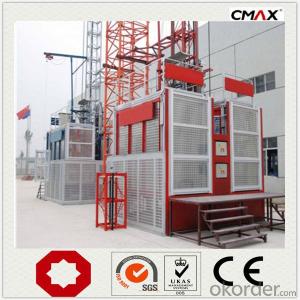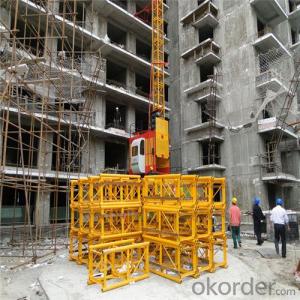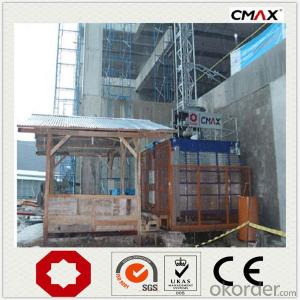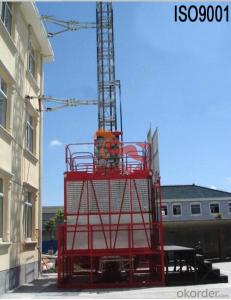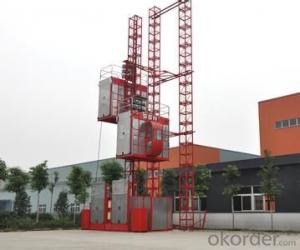Building Hoist 3200kg Single Cage Factory
- Loading Port:
- China main port
- Payment Terms:
- TT or LC
- Min Order Qty:
- 1 unit
- Supply Capability:
- 30 unit/month
OKorder Service Pledge
OKorder Financial Service
You Might Also Like
Building Hoist SC320/320
Condition: New
Application: Construction
Payload(kg):2*3200
Lifting Speed(m/min):0~45
Motor Power(kw): 2*3*22
Safety Device: 2*SAJ50-1.4
Cage: double cages
Counterweight: No
Certification: CE/ ISO
Place of Origin: China(Mainland)
Model Number: Type:SC320/SC320
Packaging & Delivery of Building Hoist
Packaging Detail: Nude package Delivery Detail: 12-20days
Main Parts of Building Hoist
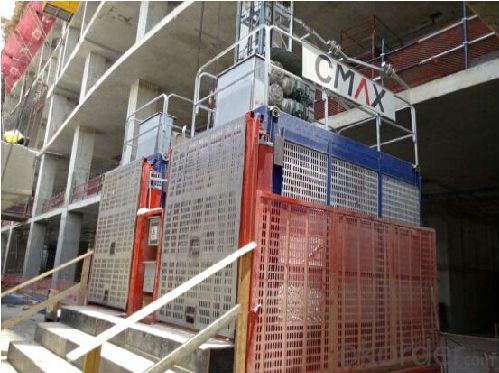
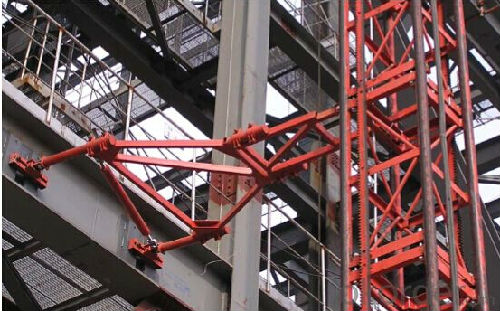
Feature:
● Adopts the most advanced VF speed control device
● during start up and braking, steady the operation process,
and ensures automated leveling.
● Adopts open loop V/Fcontrol; the speed control precision . Realizes accurate low speed positioning
● system has current-restriction function, ensuring a small current when motor start up and reducing the
● The steadiness during running mitigates concussion to mechanical parts, reduces wears of rack, pinion and the brake
and prolongs the spare parts'life.
● over voltage protection,low voltage protection, overcurrent, overload and anti-stalling protection functions,
● The system applies the special software for hoists developed by our company, making the operation more safe and
reliable.
Building Hoist Specifiction
FAQ of Building Hoist
Q: What is the building hoist main purpose?
A: Building hoist equipped with double or single cabin to transport the materials. It's the ideal
construction equipment for vertical transportation in the field of construction.
Q: What is the main structure of building hoist?
A: The P/M construction hoist mainly contains metal structure, driving system, electrical control system, cable guide &
protection system, electrical top crane and safety device.
Q: What is the meaning of the building hoist’s code?
A: for example: “SC” stands for rack and pinion hoist, “ stands for double cage and capacity
is 2 tons per cage. “SC200” stands for single cage and capacity is 2 tons.
Q: What is the dimension of the cage?
A: Normally the cage dimension for 2t type hoist. Details should be checked according to our
quotation sheet. Also, the size can be customized according to the factual site condition. It can be produced as up & down sliding or ramping model for safety and convenience.
- Q: Is it possible to use a single automatic building hoist to lift multiple objects simultaneously?
- <p>Yes, an automatic building hoist can be used to lift multiple objects at once, provided that the combined weight of the objects does not exceed the hoist's maximum load capacity. It is crucial to ensure that the hoist is designed for such operations and that all safety precautions are taken to prevent overloading, which can lead to accidents. The hoist should be equipped with a load limiter to automatically cut off power if the load exceeds safe limits, ensuring the safety of the operation.</p>
- Q: The user is asking if it's possible to substitute a hydraulic lifting device for a building hoist in construction.
- <p>Yes, a hydraulic lifting device can be used as an alternative to a building hoist in certain scenarios. Hydraulic devices offer precise control and smooth operation, which can be advantageous for lifting heavy construction materials. However, it's important to consider the specific requirements of your project, such as the weight and size of the materials to be lifted, the height of the lift, and the frequency of use. Hydraulic systems are generally more expensive and require more maintenance than building hoists, but they can provide greater lifting capacity and versatility. Always ensure that any lifting device used complies with safety standards and regulations.</p>
- Q: The user is asking if it's possible for them to fix their own building hoist without professional assistance.
- <p>While it is technically possible to repair your own building hoist, it's generally not recommended unless you have specific expertise in hoist maintenance and repair. Building hoists are complex mechanical systems that require knowledge of safety regulations and proper repair techniques. Attempting repairs without proper training can lead to accidents or further damage. It's best to hire a professional who is familiar with the specific model and has the necessary certifications to ensure the hoist is safe and functioning correctly.</p>
- Q: This question inquires whether a building hoist can be utilized in both indoor and outdoor environments, particularly in areas with limited space.
- <p>Yes, building hoists can be used both indoors and outdoors, but their suitability depends on the specific model and design. Some hoists are specifically engineered for indoor use due to their compact size and lower weight capacity, while others are designed for outdoor use and can handle heavier loads. In limited spaces, it's crucial to select a hoist with a small footprint and high lifting capacity relative to its size. Always ensure that the hoist meets the required safety standards and is operated by trained personnel to prevent accidents in confined spaces.</p>
- Q: What are the necessary maintenance tasks and considerations for ensuring the safe and efficient operation of a building hoist?
- <p>The maintenance requirements for a building hoist include regular inspections, lubrication, and checks on all mechanical components. It is crucial to inspect the hoist's cables, pulleys, and brackets for wear and tear. The drive mechanism and safety devices should be tested for proper functioning. Lubrication of moving parts is essential to reduce friction and prevent overheating. Additionally, the electrical system should be checked for any faults or damage. It's important to keep the hoist clean and free of debris to prevent any operational issues. Following the manufacturer's guidelines for maintenance intervals and procedures is vital to ensure the hoist remains safe and efficient.</p>
- Q: What specific regulations or conditions must be met when utilizing lifting equipment in construction or factory environments?
- <p>Yes, there are special requirements for using lifting equipment in construction sites and factories. These include adherence to safety regulations, regular maintenance and inspection, proper operator training, and ensuring the equipment is suitable for the task. Compliance with local and national laws such as OSHA in the U.S. or CE marking in the EU is crucial. Equipment must be certified safe for use, and operators must be licensed and follow safety protocols. Additionally, load capacities must be respected, and lifting operations must be planned and supervised to prevent accidents.</p>
- Q: Safety device for construction elevator
- 1. The governor To prevent the hanging basket construction elevator overspeed or fall and set up a safety device, is divided into a unidirectional and bidirectional type two kinds, the one-way speed limiter can only along the direction hoisting cage falling within the speed limit, two-way speed limiter can up and down along the hoisting cage speed effect on two directions. The speed limit shall be tested for performance in accordance with the prescribed time limit. 2. The buffer spring Buffer spring in spring seat connected to the base frame, so that when hanging cage fall accidents, reduce the impact of the hanging basket, at the same time ensure crane cage and weight drops landed into flexible contact, slow down the hoisting cage and the impact of weight landing. The buffer spring has a cone winding spring and a cylindrical spiral spring. Usually, there are two or three cone coiled springs or four cylindrical coils on the base of each cage.
- Q: Is it permissible to use a building hoist for lifting people or animals?
- <p>No, building hoists are not designed for lifting people or animals. They are specifically engineered for the transportation of materials and construction equipment. Using a building hoist for this purpose is dangerous and can lead to accidents. It is essential to adhere to safety regulations and use appropriate equipment for lifting people or animals to ensure their safety and comply with legal standards.</p>
- Q: This question asks for the cost of a building hoist, which is a type of construction equipment used for lifting materials.
- <p>The cost of a building hoist can vary significantly depending on factors such as the hoist's capacity, type, and features. On average, a basic building hoist can cost anywhere from $10,000 to $50,000. However, for more advanced models with higher capacities or additional safety features, the price can range from $100,000 to $200,000 or even more. It's important to consider the specific needs of your construction project and consult with equipment suppliers for accurate pricing.</p>
- Q: This question asks for a description of the process of using a hydraulic cylinder in the context of a building hoist.
- <p>To use a hydraulic cylinder in a building hoist, first ensure the hoist is properly installed and secured. Connect the hydraulic cylinder to the hoist's power source, typically a hydraulic pump. The pump pressurizes hydraulic fluid, which is then directed into the cylinder. As the fluid enters, it pushes a piston within the cylinder, causing it to extend and lift the load. To lower the load, the fluid is released from the cylinder, allowing the piston to retract. Always monitor the pressure and ensure the system is leak-free for safe operation. Regular maintenance, including checking seals and lubricating parts, is crucial to prolong the life of the hydraulic cylinder and ensure efficient hoist performance.</p>
Send your message to us
Building Hoist 3200kg Single Cage Factory
- Loading Port:
- China main port
- Payment Terms:
- TT or LC
- Min Order Qty:
- 1 unit
- Supply Capability:
- 30 unit/month
OKorder Service Pledge
OKorder Financial Service
Similar products
Hot products
Hot Searches
Related keywords
